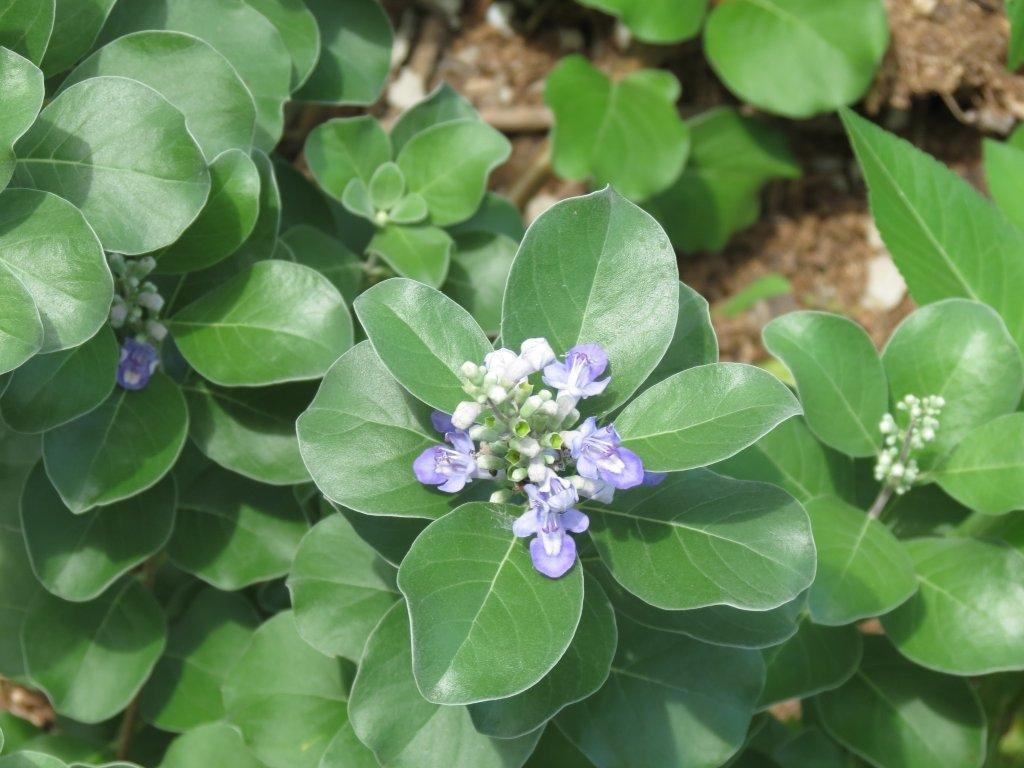
by Evan Anderson | May 20, 2020
Next week (May 18-22) is Florida Invasive Species Awareness Week! Join us online for an educational video each day at 9:00 am CST on invasive species that are important in our area and what to do about them. See the flyer below and join us on Facebook at https://www.facebook.com/PanhandleOutdoorsNews/ for the event!
Invasive species are living things that are not from an area and have adverse affects on people, whether it is their health, the economy, or the environment we live in. The more people who can identify and control these species, the healthier we can keep ourselves, our businesses, and the world around us!

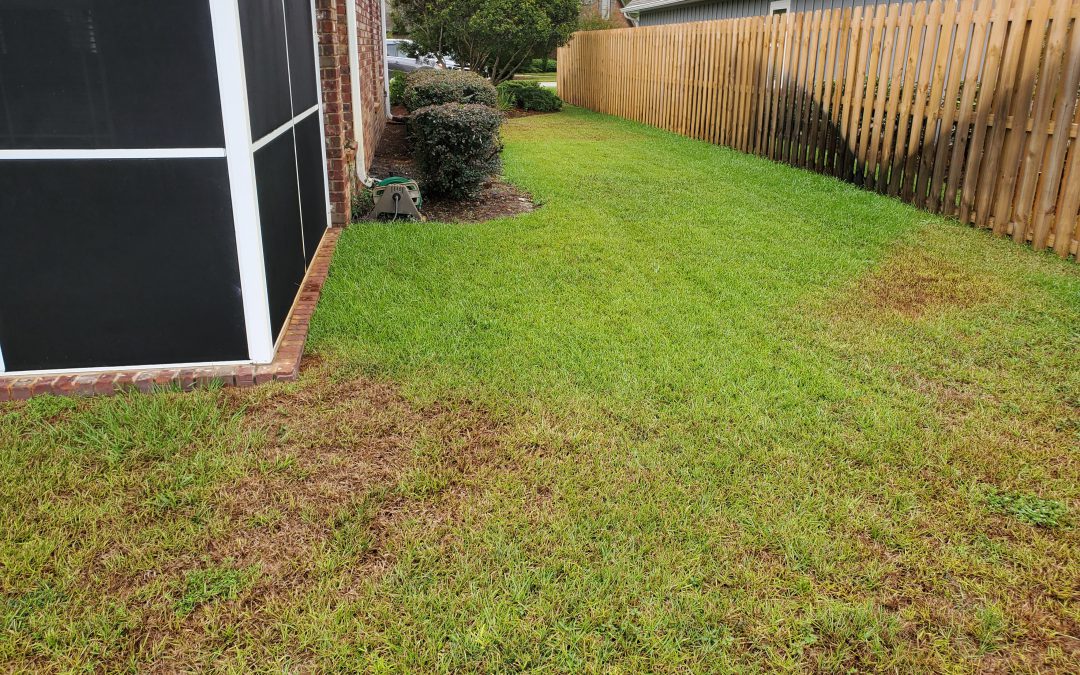
by Evan Anderson | May 13, 2020
As temperatures lean more toward summertime highs, conditions can sometimes leave a landscape looking sad. Water issues can be a major source of headaches for homeowners when they cause plants to decline. The cause is not always readily apparent.
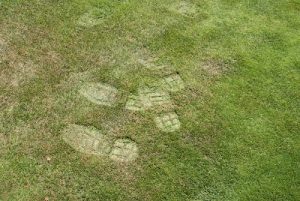
Footprints remain in droughty grass. Photo courtesy of Taylor Vandiver.
Water is something not even the meanest cactus in the driest desert can do without. Too little, and plants start to develop symptoms of drought stress. These symptoms include more than just wilting; stunted growth, curling or rolling leaves, fruit or leaves dropping, and yellowing or browning especially at leaf edges are all clues that a plant is thirsty. In lawns, underwatered grass may not spring back when stepped upon, leaving visible footprints in the turf. Long periods of drought stress can cause grass to thin. Plants exhibiting symptoms such as these may require extra water. A layer of mulch around landscaping can also help to retain moisture if soil dries out too quickly. Newly installed plants are particularly susceptible to drying out, and hot weather dries out all plants more quickly.
Plants can also be overwatered, however. Even with the well-drained, sandy soils that are present in much of the Florida Panhandle, it is possible to put too much water on a lawn or landscape. This can lead to problems that may be similar to those caused by underwatering – stunted growth, curled leaves, wilting, limbs or leaves dying, and increases in fungal disease can all occur. Lawns may become patchy and weeds, especially those that enjoy damp conditions such as sedges or dollarweed may establish themselves.
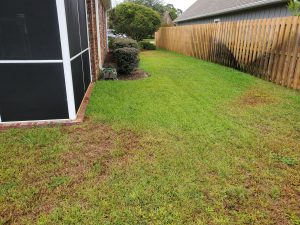
Improperly calibrated sprinklers. Photo courtesy of Evan Anderson.
Stress of any sort can also leave plants more susceptible to pest and disease issues. A healthy plant is better able to compete with weeds and fight off infestation or infection. If you notice problems with fungal disease, increased insect populations, or weed issues, it could be made worse by over- or underwatering!
To help avoid watering issues, make sure plants with similar water requirements are planted near one another. If you have irrigation for your lawn or landscape, it is important to calibrate it regularly. Make sure the system has a rainfall shutoff device and check systems for damaged or malfunctioning emitters. And remember, if you are having trouble with your lawn or landscape, contact your local Extension office for help!
You can find further information on watering in our EDIS publications located at https://edis.ifas.ufl.edu/topic_landscape_irrigation_and_fertilization, and at our Gardening Solutions website at https://gardeningsolutions.ifas.ufl.edu/care/irrigation/.
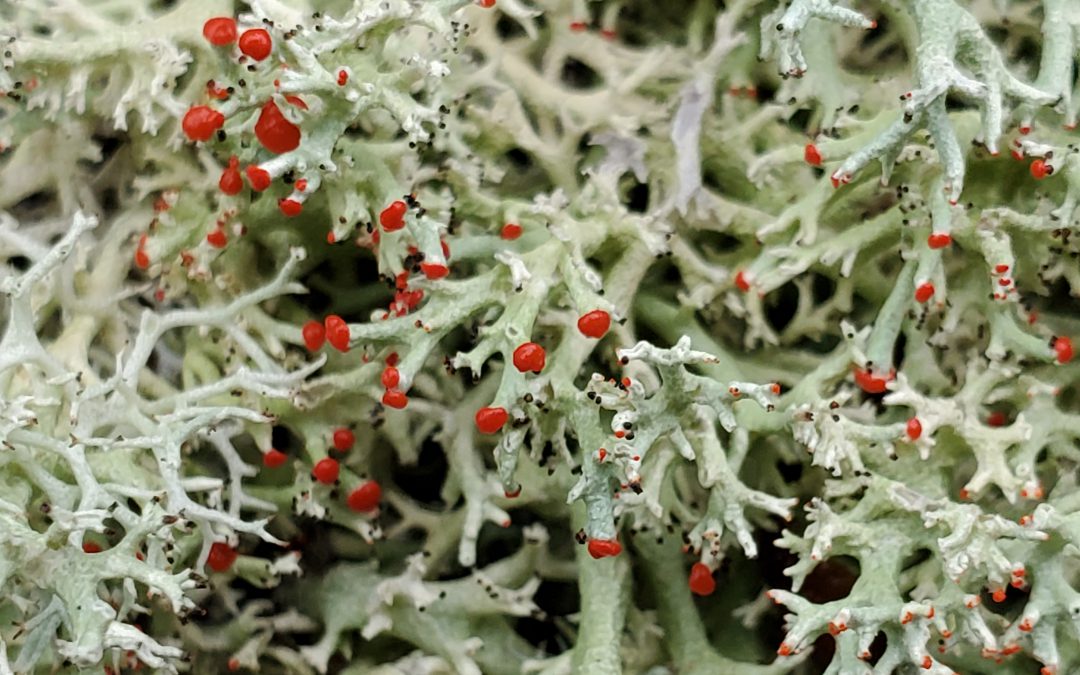
by Evan Anderson | Feb 27, 2020
This time of year, owners of woody plants might notice that leaf canopies are thin. Fruit and ornamental trees, shrubs, and bushes might have shed some leaves over the winter or thinned out due to disease, cold damage, or other problems. When this happens, it can call more attention to the stems of these plants, which may sport a fuzzy, frilly growth on them. More than once I’ve heard people ask, “What is this growing on my plant and how do I stop it from killing it?”.
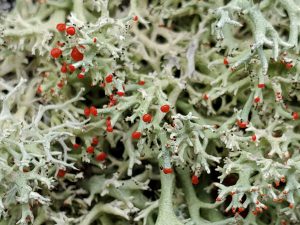
Red Tipped Lichen – Image Credit Evan Anderson UF / IFAS Extension
Lichen is the fuzzy growth in question, and the good news is that it doesn’t harm the plant it grows on. Lichen is an organism that’s a combination of fungus and either algae or cyanobacteria. The algae photosynthesizes and produces energy to share with the fungus, which provides protection and support. Thankfully, they’re pretty self-contained, and don’t need to steal nutrients or water from whatever they’re growing on. That means they can grow just about anywhere – on rocks, fence posts, tree bark, or on the ground (if you’ve seen deer moss growing in the woods, that’s a lichen!). Again, they are NOT parasitic and do NOT hurt plants.
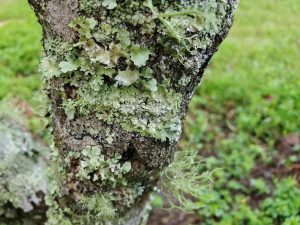
Lichen on Tree Trunk. Image Credit Evan Anderson, UF / IFAS Extension
It’s common to find lichens growing in many different forms and colors. One alarmed tree-owner brought me a branch decorated with a round blotch that had a bright reddish edge. A Christmas Wreath lichen had found a home on her tree, and while the red rings it forms may look alarming, they’re just as innocuous as other lichens. There may be multiple forms of lichen growing in close proximity on a branch, as well. Flat, wavy, rippled, filamentous, bushy, and powdery looking lichen might all mix together to make a strange (or beautiful) looking collection on a tree.
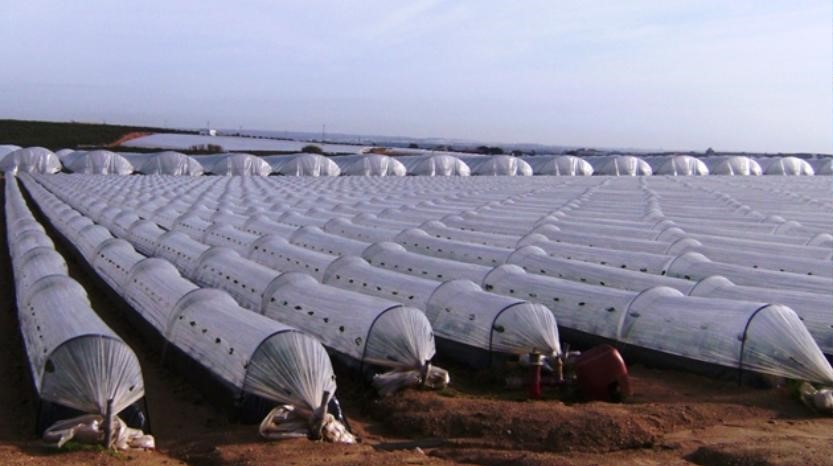
by Evan Anderson | Jan 27, 2020
North Florida weather brings its ups and downs, and there are times during the winter season when the downs are low enough to trouble even cold-tolerant crops. Gardeners who wish to keep their plants growing as long as possible, or give them a head start in the spring, may want to consider installing low tunnels.
The term ‘low tunnel’ refers to a structure used for season extension that is usually made of hoops covered with some material, such as fabric or plastic. A low tunnel, as you might surmise, is low to the ground, like a miniature greenhouse that just covers the plants. They are usually no more than a few feet in height. A high tunnel, by comparison, is tall enough to walk in, but with a similar sort of construction.
These are versatile structures, which can act as more than just protection from cold. Low tunnels can be easily modified to provide extra shade for crops during the hottest months. A lighter fabric or fine mesh can also be used as protection from insect pests. Low tunnels can be constructed to stand on their own or may be integrated into a raised bed. They may even be placed inside a larger structure such as a high tunnel to offer a double layer of protection.

An example of a low tunnel using wire hoops and plastic mulch to prevent weeds. Photo credit – B M. Santos, UF / IFAS Extension

Pipe Bender for bending hoops for low tunnel systems. Image Credit Evan Anderson, UF / IFAS Extension
The cover of a low tunnel can be plastic, fabric, shade cloth, or even insect netting, depending on the needs of the crop. The hoops that hold the cover may be made of any sturdy material, such as wire, pieces of PVC, or metal electrical conduit. Hoop benders are available to help bend metal conduit to the correct shape. For more information about low tunnels, please see this EDIS publication.










